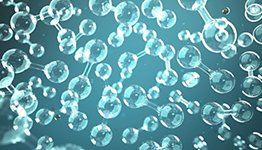Fusing two hydrogen nuclei releases a huge burst of energy – in nature, this is the type of physical reaction that powers the sun and the other stars. The great advantage of the technology is that it does not emit greenhouse gases; nor does it emit heavily polluting or highly radioactive substances, which makes it a highly attractive energy source. It is also virtually inexhaustible as it uses a blend of easily obtainable elements as fuel: deuterium and tritium, two hydrogen isotopes. Deuterium comes from seawater, while tritium can be produced by a physical reaction with lithium.
Magnetic confinement technology is being investigated as a potential means of achieving fusion continuity control in power plants. As its name suggests, the technology uses extremely powerful magnetic fields to control the plasma in which the fusion takes place. The journey towards this technological revolution will be a long one, but will represent a turning point in the decarbonization process and will lead to a more sustainable future.
Power stations fed by fusion reactors could meet the growing demand for energy at big production and population centres while maintaining high sustainability. Smaller stations, on the other hand, integrated with renewable sources, could make it easier to provide energy to small communities and off-grid businesses.











